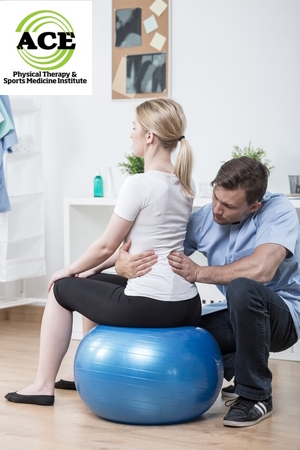PELVIC CROSSED SYNDROME AND PHYSICAL THERAPY

Tid Bits of Info
- Common causes of PCS are sitting too much, improper weight lifting and/or a sedentary lifestyle.
- PCS is a classic case of muscle imbalances and can be treated with exercise.
- Gone untreated, PCS can lead to early degenerative changes in the lumbar spine and hips.
- The symptoms of PCS will present as pain in low back, anterior hips or both.
- Seek the advice and treatment of a Physical Therapist if you suffer from these symptoms.
Physical Therapists treat patients with lower back and hip pain every day. Some people suffer from this pain without a clear diagnosis because this type of pain is common and can have a variety of causes. Physical Therapists and other qualified healthcare professional can assess the pain, helping to identify causes and treatment plans. One source of lower back and hip pain is an imbalance in musculature of the torso and hips.
This imbalance can cause pain in numerous locations. If the imbalance is corrected, symptoms can be resolved and a good exercise routine can help to prevent their return. These symptoms can be associated with a condition called Pelvic Crossed Syndrome (PCS), Lower Crossed Syndrome or a host of other names that refer to the same condition.
The core and hips have to work together to be able to move someone through space without developing pain. If one or the other areas is too weak, inflexible or not in synch from a neuromuscular standpoint it can have a detrimental effect on the other parts of the body. Persons suffering from Pelvic Crossed Syndrome will complain of pain in the low back area in one scenario and in the hips in the other scenario.
The “crossed” pattern of dysfunction is associated with weakness and shortened or excessively lengthened muscles. Certain muscles that shortened or excessively lengthened will be weak secondary to muscle physiology and an altered motor programming. These muscles tend to be more irritable. The low back extensor muscles are “tight” as are the anterior hip flexor muscles. Weakness is common in the abdominal muscles and gluteus maximus and medius. The muscular imbalance and dysfunction leads to an anterior tilt of the pelvis and hyperlordosis of the lumbar spine. The patient can present with pain in the low back or hips. The presentation of symptoms will be dependent upon the status of the particular muscular dysfunction of the individual.
The muscular dysfunction and postural changes due to the dysfunction can lead to problems in other parts of the body. The thoracic spine can become more kyphotic and the cervical spine more lordotic. The changes in postural positioning of the spine can lead to a host of symptoms including headaches and breathing difficulty.
People suffering from low back and hip pain or symptoms corresponding to Pelvic Crossed Syndrome should seek a diagnosis and treatment from a Physical Therapist. Physical Therapists are highly skilled healthcare professionals that are educated and trained in evaluating and treating musculoskeletal injuries and/or conditions that limit someone’s function. They can evaluate the status of the patient’s condition and then devise an individualized treatment program that will enhance flexibility and strength. They will perform manual techniques that will help to increase the pliability and flexibility of the soft tissues. The program will incorporate specific exercises that will enhance the strength of weak muscles.
The goals of the program are simple. The routine will enhance strength and flexibility. The increased strength and flexibility will decrease the pain that the patient is experiencing and increase functional capabilities. The rehabilitation program will facilitate improved posture and reduce the stress and strains that are placed on the various body parts.
Seeking help from a Physical Therapist is easy. You do not need a doctor’s prescription and you can just “walk-in” and ask to be treated. Your health insurance might require you to obtain a referral from you general practitioner so you should call your insurance company prior to going to the Physical Therapist’s office.
Pelvic Crossed Syndrome, Lower Crossed Syndrome or the same condition that is referred to by various other names is a condition that effects the musculature and soft tissues of the torso and pelvic region. The syndrome can present in many ways but the pain that is present can be effectively treated with specific exercises and Physical Therapy techniques. If you think that you might be suffering from this condition, seek the advice of a Physical Therapist.


























I like this blog as well due to the fact that it is very closely related to the functional movement screen. By understanding where these individuals are lacking strength and flexibility and the activities that may be leading to these deficits, physical therapists are able to better get to the root of the functional problem.